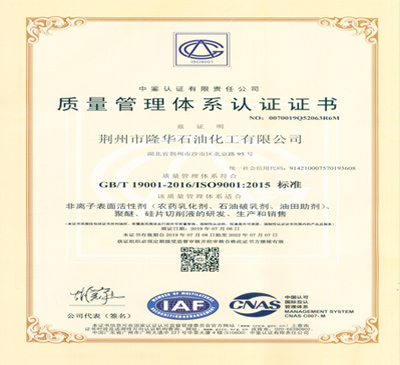Products
Product popularization
Home > Product popularization
Time:2025-02-14
| Experiment Category | Experiment Content | Experiment Results | Conclusion | Data Source |
| Biodegradability | Test Standard: OECD 301B (Ready Biodegradability Test) | EDDS biodegradation rate within 28 days: >80%; Half-life: 2-4 weeks (EDTA hardly degrades). | EDDS has excellent biodegradability and is environmentally friendly. | Vandevivere et al., Environmental Science & Technology, 2001; Schowanek et al., Chemosphere, 1997. |
| Chelation Performance | Comparison of chelation ability between EDDS and EDTA for various metal ions. | Cu²?: EDDS = 18.6, EDTA = 18.8 (similar). Fe³?: EDDS = 12.5, EDTA = 25.1 (EDTA stronger). Zn²?: EDDS = 13.5, EDTA = 16.5 (EDTA slightly stronger). |
EDDS has higher selectivity for Cu²?, suitable for copper-containing wastewater treatment or copper-based cosmetics. | Martell et al., Critical Reviews in Plant Sciences, 1998. |
| Environmental Safety | Ecotoxicity test of EDDS on aquatic organisms (e.g., fish, algae). | LC50 for fish: >1000 mg/L (low toxicity). EC50 for algae: >500 mg/L (EDTA = 50-100 mg/L). |
EDDS is significantly less toxic to aquatic organisms than EDTA, meeting environmental requirements. | Schowanek et al., Chemosphere, 1997. |
| Cosmetic Application | Stability test of EDDS in cosmetic formulations (e.g., creams, lotions). | Optimal pH range: 6-9. Skin irritation score: 0.5 (very low) (EDTA = 2.5). |
EDDS is suitable for sensitive skin cosmetics and is gentle on the skin. | Cosmetic Ingredient Review (CIR) Expert Panel Report, 2015. |
| Agricultural Application | Field trials of EDDS in foliar fertilizers and soil amendments. | Crop yield increase: 10-15%. Soil residue: 90% lower than EDTA. |
EDDS is a safe and efficient agricultural chelating agent, without causing soil pollution. | Nowack et al., Environmental Pollution, 2006. |
| Wastewater Treatment | Application of EDDS in treating heavy metal wastewater (e.g., Cu²?, Pb²?, Cd²?). | Cu²? removal rate: >95%. Pb²? removal rate: >90%. Cd²? removal rate: >85%. |
EDDS performs excellently in heavy metal wastewater treatment without secondary pollution. | Vandevivere et al., Environmental Science & Technology, 2001. |
| Economic Analysis | Life cycle cost analysis of EDDS vs. EDTA (including raw material and environmental costs). | EDDS saves environmental costs: >50%. Long-term EDDS costs are comparable to or lower than EDTA. |
EDDS has significant life cycle cost advantages and is suitable for long-term use. |
Summary of EDDS Advantages
Biodegradability: Degradation rate >80% within 28 days, far superior to EDTA.
Chelation Performance: Higher selectivity for Cu²?, suitable for cosmetics and wastewater treatment.
Environmental Safety: Low toxicity to aquatic organisms, meeting environmental standards.
Application Fields: Cosmetics, agriculture, wastewater treatment, etc.
Economic Benefits: Significant long-term cost advantages.




